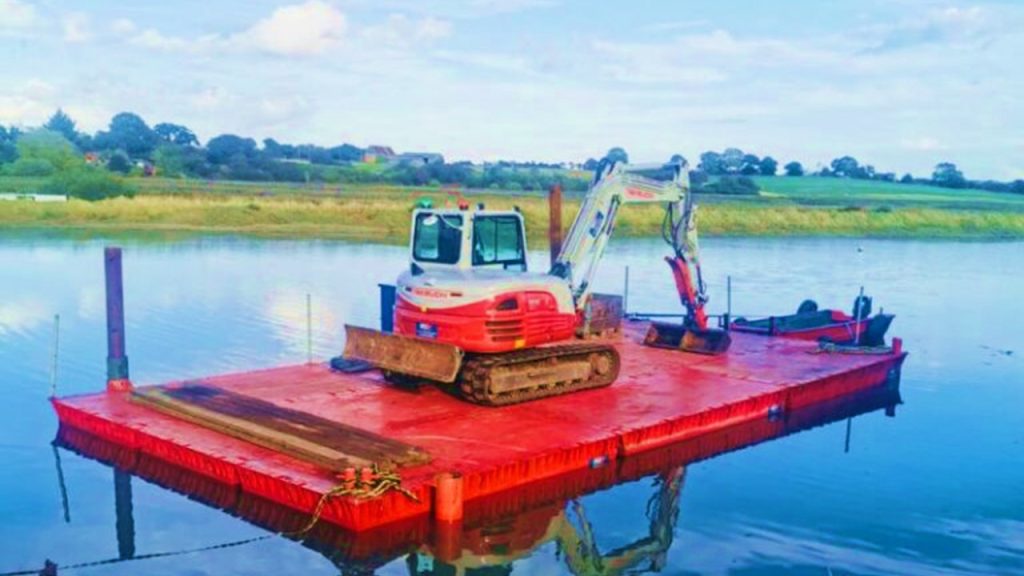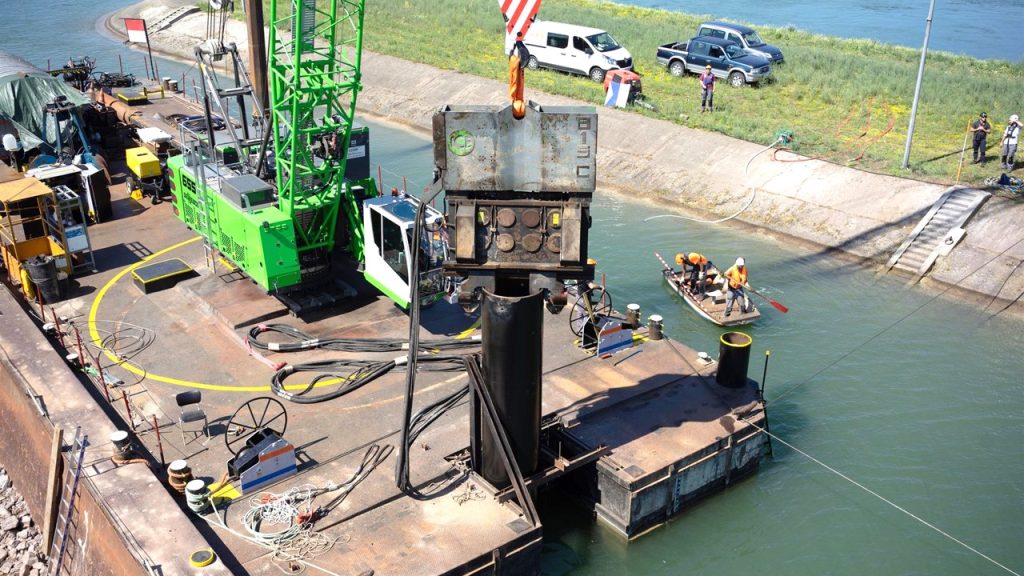Desilting, the process of removing accumulated sediments and debris from rivers, lakes, and seas, is a crucial task that ensures the efficient flow of water bodies while maintaining their ecological balance. In recent years, city governments in the Philippines have been exploring innovative methods to carry out this essential activity effectively. One such method gaining popularity is desilting using pontoons, floating structures equipped with advanced machinery and technology that aid in the removal of sediment deposits. This article delves into the advantages of utilizing pontoons for desilting purposes and how city governments can incorporate this technique into their overall environmental management strategies. By understanding the benefits and feasibility of desilting using pontoons, urban areas can make significant strides toward cleaner waterways and improved aquatic ecosystems.
The Importance of Desilting for Water Bodies
Desilting, the process of removing sediment and silt from water bodies, is crucial for maintaining the health and sustainability of these ecosystems. Over time, sediments such as sand, clay, and organic matter accumulate in lakes, rivers, and ponds due to erosion and runoff. This buildup not only reduces the depth of the water body but also affects its overall quality. Desilting plays a vital role in restoring water bodies by improving their capacity to store water effectively.
One effective method of desilting is through the use of pontoons. Pontoons are floating platforms that can be equipped with dredging machinery to remove sediments from underwater surfaces. These machines break up the sediments while suction pumps extract them from the water body. The pontoons can then transport the collected sediments away from sensitive areas or dispose of them appropriately on land.
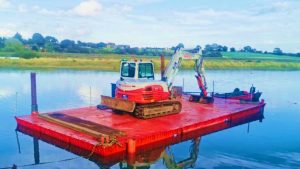
Desilting Using Pontoons in Water Body Operations
Desilting operations are a crucial part of maintaining the cleanliness and functionality of water bodies in cities. To carry out these operations effectively, local government units in the Philippines have started utilizing pontoons to enhance their desilting efforts. Pontoons, which are flat-bottomed floating structures, provide an ideal platform for accessing and removing sediment from lakes, rivers, and canals.
One of the main advantages of using pontoons in desilting operations is their ability to reach areas that are otherwise inaccessible by land-based machinery. These versatile platforms can maneuver through shallow waters and tight spaces with ease, allowing them to access even the most remote corners of water bodies. By utilizing pontoons, city governments in the Philippines can ensure more thorough removal of sediment buildup, improving overall water quality and preventing potential environmental hazards.
Furthermore, pontoons offer a stable base for carrying out desilting activities efficiently. Their flat and wide surface provides a solid foundation for heavy equipment, such as excavators or suction dredgers, to operate on. This stability minimizes the risk of accidents or damage to the machinery, ensuring a safer working environment for personnel involved in desilting operations.
Moreover, pontoons can be easily modified and equipped with specialized tools specifically designed for desilting purposes. These tools include dredging buckets, pumps, or hydraulic arms that facilitate the removal of sediment from the water bodies.
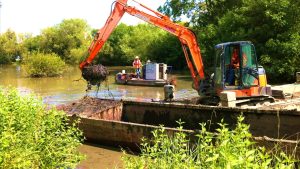
Benefits of Desilting Using Pontoons
Desilting, the process of removing sediment and silt buildup from bodies of water, is a crucial task for city governments in the Philippines to maintain the health and functionality of their waterways. When it comes to desilting operations, utilizing pontoons can offer numerous benefits that streamline the process and improve overall efficiency.
Firstly, using pontoons for desilting allows city and municipal governments to access hard-to-reach areas more effectively. Pontoons are designed to float on water, making them ideal for navigating through shallow or narrow sections of rivers, lakes, or ponds. This enables workers to reach areas that would otherwise be inaccessible by traditional machinery or vehicles. By reaching these difficult-to-access spots efficiently, pontoon-based desilting ensures more thorough removal of sediment and silt.
Secondly, deploying pontoons for desilting operations minimizes the environmental impact. The use of pontoons reduces the need for heavy machinery or vehicles to be brought into sensitive aquatic environments. Traditional machinery can cause damage to the surrounding ecosystem, disrupting habitats and potentially releasing harmful pollutants into the water. In contrast, pontoon-based desilting operations are less intrusive and have a lower risk of causing harm to aquatic life.
Additionally, pontoons are designed with features that help protect the environment during desilting activities. For example, pontoons are equipped with containment systems to prevent the release of sediment or pollutants back into the water. These systems ensure that any silt or debris removed from the bottom of a water body is securely contained within the pontoon. This prevents it from spreading and re-entering the ecosystem.
Moreover, pontoons are designed to be versatile and adaptable for different desilting projects. Their modular construction allows for easy customization and reconfiguration to suit specific requirements. This flexibility ensures efficient operation while minimizing any potential damage to sensitive ecosystems.
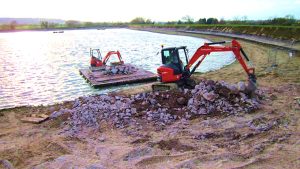
Case Studies: Successful Desilting Using Pontoons by Philippine City Governments
Desilting, a crucial process in maintaining the efficiency and sustainability of water bodies, has become a top priority for city governments in the Philippines. In recent years, several cities have successfully implemented desilting projects using pontoons as their go-to solution. These case studies not only demonstrate the effectiveness of pontoon-based desilting methods but also highlight the innovative approaches adopted by Philippine city governments.
One remarkable example is the desilting project carried out by the city government in Metro Manila on its main river. Facing severe siltation issues that affected navigation and caused flooding during monsoon seasons, the mayor of the city in Metro Manila decided to employ pontoons equipped with dredging machinery. By strategically positioning these floating platforms along the riverbanks, they were able to efficiently remove accumulated sediments without disrupting regular activities or causing significant environmental impacts.
Another successful case study of a desilting project by a city government is the river desilting project in Cebu. The river in Cebu is the longest river in the Philippines and plays a crucial role in the country’s transportation system. Over time, sedimentation reduced the water depth, making it difficult for large vessels to navigate and increasing the risk of flooding.
To address these issues, the city mayor of Cebu initiated a massive desilting project along the river. The desilting project in Cebu involved dredging and removing accumulated sediments from the riverbed, allowing for improved water flow and deeper navigation channels. The city government collaborated with various stakeholders, including environmental experts, engineering firms, and local communities, to ensure the project’s success.
To minimize environmental impacts, careful planning was undertaken. Sediment disposal sites were identified in locations away from sensitive ecosystems or residential areas.

Future Possibilities and Innovations in Desilting Using Pontoons
One future possibility and innovation in desilting methods utilizing pontoons is the use of underwater robot technology. These robots can be remotely operated to perform precise desilting tasks in hard-to-reach areas of rivers, lakes, and seas. Equipped with advanced sensors and cameras, these robots can identify and remove sediment buildup without causing damage to the surrounding ecosystem.
Another potential innovation is the development of eco-friendly desilting materials that can be deployed using pontoons. Traditional methods often involve the use of chemical agents or heavy machinery, which can have adverse effects on aquatic life. However, by using biodegradable materials or natural substances that promote sedimentation, such as certain types of plants or microorganisms, cities could reduce their environmental impact while effectively removing silt from bodies of water.
Overall, as technology continues to advance and environmental concerns become more pressing, there are numerous possibilities for future innovations in desilting methods utilizing pontoons. These advancements hold the potential to revolutionize how cities manage sediment buildup in rivers, lakes, and seas while minimizing their ecological footprint.
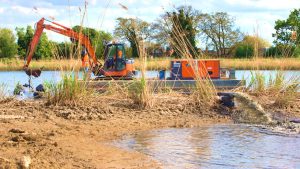
Enhancing Environmental Health Through Effective Desilting Using Pontoons
One effective method that city governments in the Philippines can employ to enhance environmental health is the use of pontoons for desilting in rivers, lakes, and seas. Desilting involves removing accumulated silt and debris from the bottom of water bodies, which is crucial for maintaining their ecological balance. Pontoons provide a versatile and efficient platform for conducting desilting operations, as they can be easily transported to various locations and accommodate different types of equipment.
By effectively using pontoons for desilting, local government units can prevent the degradation of aquatic ecosystems caused by excessive sedimentation. Silt accumulation not only reduces water depth but also affects water quality by trapping pollutants and nutrients within its layers. Additionally, it can disrupt natural habitats and hinder the growth of aquatic plants and organisms. By regularly removing silt through pontoon-based desilting operations, city governments contribute to preserving biodiversity, improving water quality, and mitigating flood risks.
Furthermore, employing pontoons for desilting allows local government units in the Philippines to manage sediment disposal efficiently. The collected silt can be properly treated or recycled instead of being indiscriminately dumped elsewhere, thus minimizing negative impacts on surrounding environments. With proper planning and coordination among different stakeholders involved in desilting operations, such as environmental agencies and waste management facilities, pontoon-based methods offer an effective approach to enhancing environmental health in rivers, lakes, and seas within urban areas.
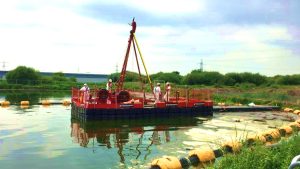
Searching for a Pontoon Supplier for Your Desilting Projects in the Philippines?
Are you in search of the best pontoon supplier to support your desilting projects in the Philippines? Look no further than Amaya Dockyard and Marine Services Inc. With years of experience, our sister company specializes in manufacturing top-quality steel pontoons that are specifically designed for city governments. Their expertise lies in providing robust and durable solutions that can effectively handle the challenging task of desilting.
- Email us: info@fullspeedchartering.com
- Call our 24-hour hotline: +63 939 375 3224
- Viber: +63 939 375 3224
- WhatsApp: +63 939 375 3224
- Facebook Messenger: Click here
- Click here to inquire
Amaya Dockyard and Marine Services Inc. take great pride in their commitment to producing high-quality products. Their pontoons are expertly crafted using state-of-the-art technology and premium materials, ensuring the long-lasting performance of pontoons even under demanding conditions. Whether you need a single steel pontoon or an entire fleet of rental pontoons, this trusted supplier can meet your requirements with efficiency and precision.
By choosing Amaya Dockyard and Marine Services Inc., you can be confident that your desilting projects will be executed smoothly and successfully.
Conclusion: Desilting Using Pontoons by City Governments in the Philippines
In conclusion, the use of pontoons by city governments in the Philippines for desilting purposes in rivers, lakes, and seas has proven to be an effective solution in maintaining water bodies’ health and sustainability. The implementation of this method has resulted in numerous benefits for both the environment and local communities. Firstly, desilting using pontoons helps to prevent sediment buildup, which can lead to a range of issues, such as reduced water quality, decreased biodiversity, and increased flood risks.
Furthermore, by regularly removing sediment from water bodies through pontoon-based desilting operations, local government units are able to create healthier ecosystems that support thriving aquatic life. This not only enhances biodiversity but also contributes to the overall ecological balance. Additionally, the removal of sediment can improve water flow within rivers and lakes, reducing the risk of stagnant areas that could potentially become breeding grounds for disease-carrying insects.
Overall, desilting using pontoons by Philippine city governments is a sustainable approach that offers long-term benefits for both the environment and local communities. By ensuring clean and healthy water bodies through regular maintenance activities like desilting using pontoons, cities can safeguard their natural resources while also promoting recreational opportunities and preserving the beauty of these aquatic environments for future generations to enjoy.

